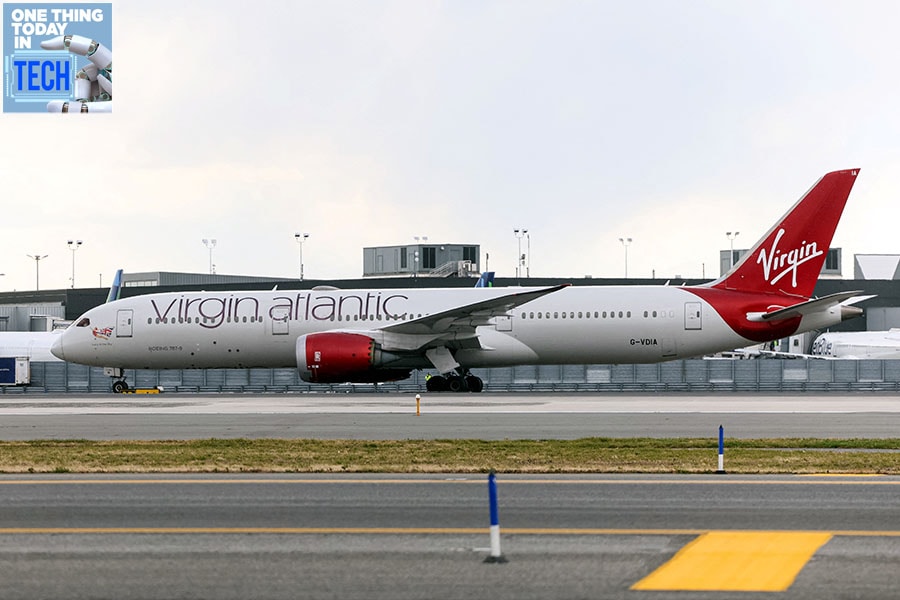
Flight100, Virgin Atlantic's green trip, spotlights aviation's carbon emissions problem
Less than 0.1 percent of jet fuel today is based on non-fossil based greener alternatives, highlighting the need for stepping up efforts
 Virgin Atlantic Boeing 787 arrives to complete the first 100% Sustainable Aviation Fuel transatlantic flight from London's Heathrow airport to John F. Kennedy International Airport, in New York City, U.S., November 28, 2023.
Image: Reuters/Brendan McDermid
Virgin Atlantic Boeing 787 arrives to complete the first 100% Sustainable Aviation Fuel transatlantic flight from London's Heathrow airport to John F. Kennedy International Airport, in New York City, U.S., November 28, 2023.
Image: Reuters/Brendan McDermid
The first trans-Atlantic flight using 100 percent sustainable aviation fuel was made between London and New York yesterday by Britain’s Virgin Atlantic, bringing the industry another small step closer to sustainable aviation.
Test flight VIR100, which did not carry paying passengers, took off from London’s Heathrow Airport at 11:49 am UK time (6:49 am ET and 5:19 pm in India) and landed at New York’s JFK airport at 2:05 pm ET, CNBC reported, citing Flightradar24.
The flight, which the airline named Flight100, demonstrated that sustainable aviation fuel (SAF) was a safe drop-in replacement for the current fossil-fuel based jet fuel, compatible with today’s engines, airframes and fuel infrastructure, Virgin Atlantic said in a press release yesterday.
“Flight100 proves that sustainable aviation fuel can be used as a safe, drop-in replacement for fossil-derived jet fuel,” Shai Weiss, CEO of Virgin Atlantic, said in the press release.
SAF is made from non-fossil based raw materials, including plant and animal waste, and synthetic chemicals via industrial processes. That it can be a drop-in alternative means that it can be used with the existing commercial aircraft without any costly modifications to their engines, ground infrastructure and so on.








